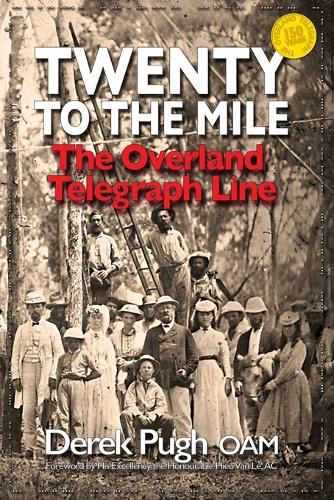Readings Newsletter
Become a Readings Member to make your shopping experience even easier.
Sign in or sign up for free!
You’re not far away from qualifying for FREE standard shipping within Australia
You’ve qualified for FREE standard shipping within Australia
The cart is loading…






The greatest engineering problem facing Australia - the tyranny of distance - had a solution: the electric telegraph, and its champion was the sheep-farming state of South Australia. In two years, Charles Heavitree Todd, leading hundreds of men, constructed a telegraph line across the centre of the continent from Port Augusta to Port Darwin. At nearly 3,000 kilometres long and using 36,000 poles at ‘20 to the mile’, it was a mammoth undertaking, but at last, in October 1872, Adelaide was linked to London. The Overland Telegraph Line crossed Aboriginal lands first seen by John McDouall Stuart just 10 years before and messages which previously took weeks to cross the country now took hours. Passing through eleven new repeater stations, built in the remotest parts of Australia, the line joined the vast global telegraph network, and a new era was ushered in. Each station held a staff of six and they became centres of white civilization and the cattle or sheep industry as the Aborigines were displaced. The unique stories of how men and women lived and/or died on the line range from heroic, through desperate, to tragic, but they remain an indelible part of Australia’s history.
$9.00 standard shipping within Australia
FREE standard shipping within Australia for orders over $100.00
Express & International shipping calculated at checkout
The greatest engineering problem facing Australia - the tyranny of distance - had a solution: the electric telegraph, and its champion was the sheep-farming state of South Australia. In two years, Charles Heavitree Todd, leading hundreds of men, constructed a telegraph line across the centre of the continent from Port Augusta to Port Darwin. At nearly 3,000 kilometres long and using 36,000 poles at ‘20 to the mile’, it was a mammoth undertaking, but at last, in October 1872, Adelaide was linked to London. The Overland Telegraph Line crossed Aboriginal lands first seen by John McDouall Stuart just 10 years before and messages which previously took weeks to cross the country now took hours. Passing through eleven new repeater stations, built in the remotest parts of Australia, the line joined the vast global telegraph network, and a new era was ushered in. Each station held a staff of six and they became centres of white civilization and the cattle or sheep industry as the Aborigines were displaced. The unique stories of how men and women lived and/or died on the line range from heroic, through desperate, to tragic, but they remain an indelible part of Australia’s history.